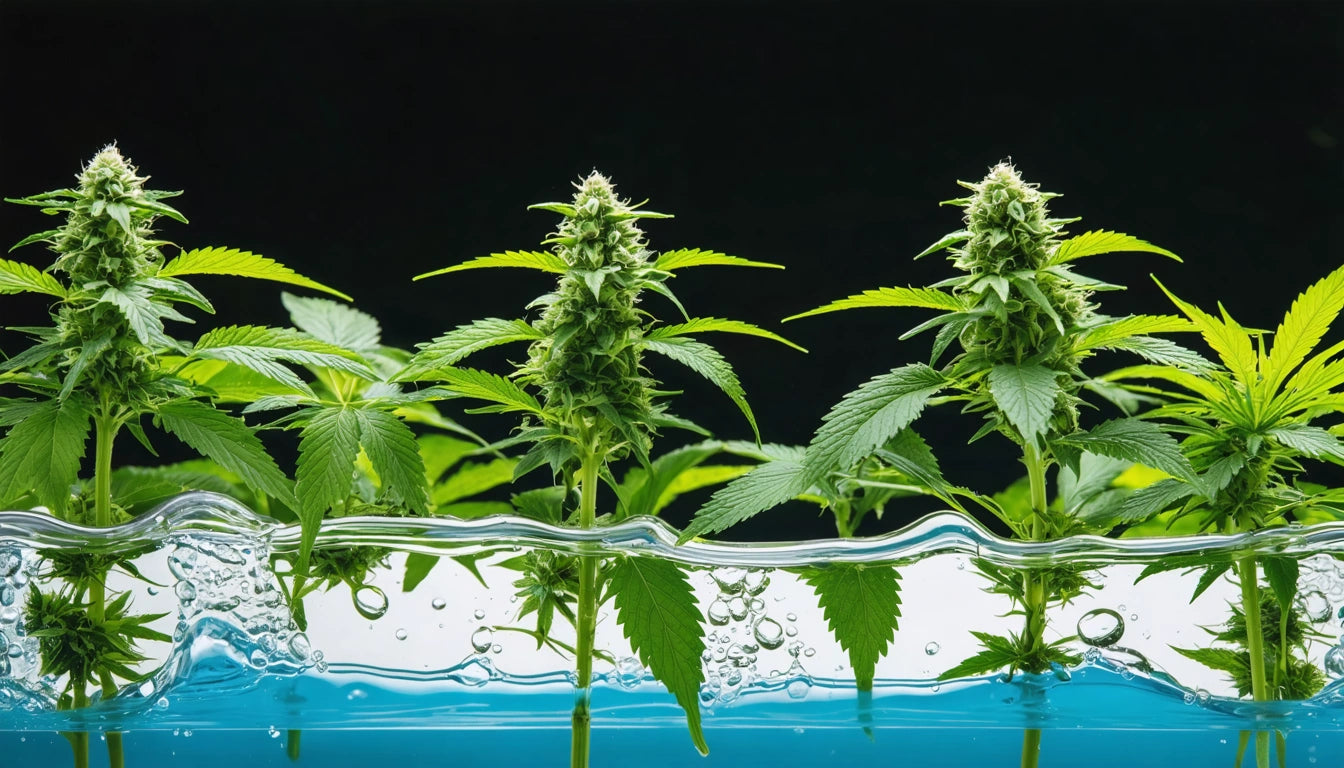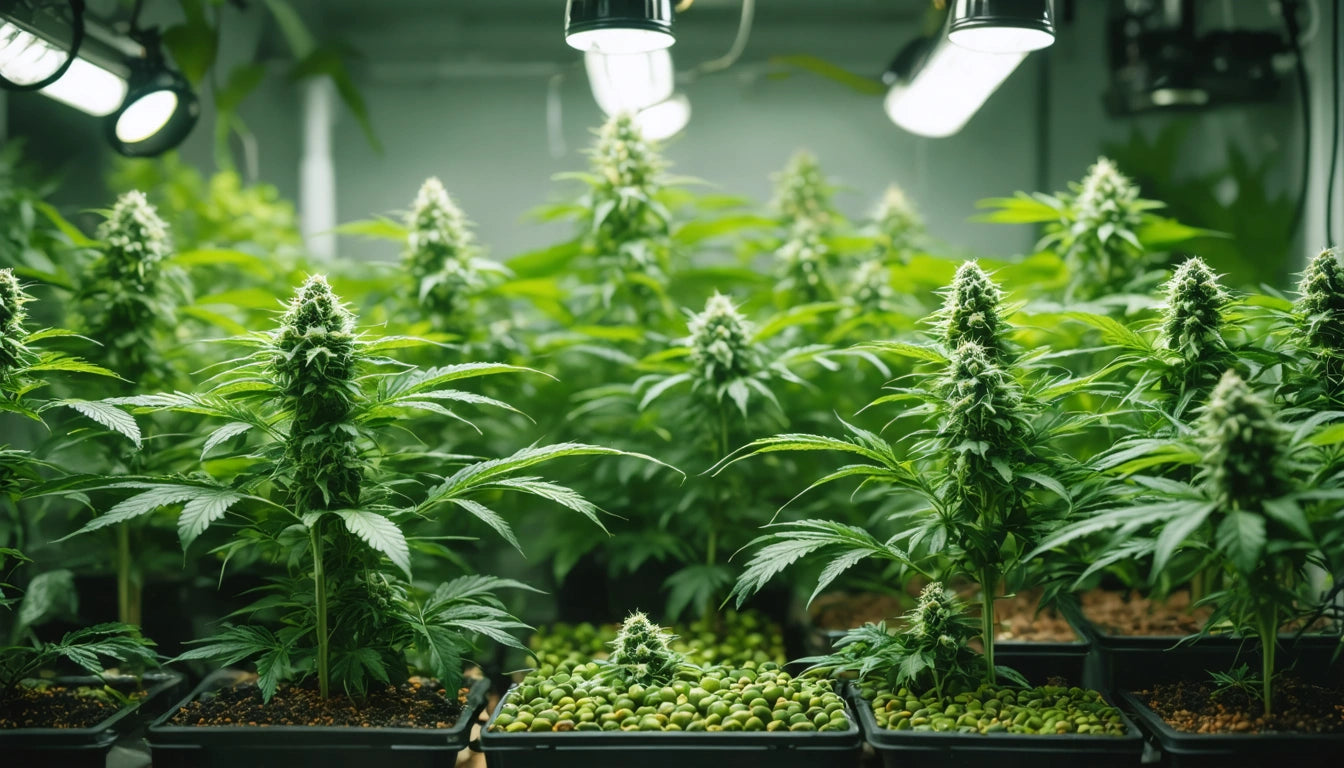Table of Contents
The Ultimate Guide to Watering and Hydroponic Systems for Cannabis Cultivation
Water is the lifeblood of cannabis cultivation, whether you're growing in traditional soil or using advanced hydroponic systems. Understanding the best water for cannabis and selecting the right hydroponic system for weed can significantly impact your yields, potency, and overall plant health. This comprehensive guide explores everything from basic watering techniques to sophisticated hydroponic setups designed specifically for cannabis cultivation.
Water Quality Basics for Cannabis Cultivation
The foundation of successful cannabis cultivation begins with water quality. Cannabis plants thrive in water with specific properties:
- pH level: Maintain between 5.5-6.5 for hydroponic systems and 6.0-7.0 for soil
- PPM (parts per million): 500-700 for seedlings, 800-1100 for vegetative growth, and 1000-1500 for flowering
- Temperature: Ideally between 65-73 °F (18-23 °C)
Municipal water often contains chlorine and chloramines that can harm beneficial microbes in your growing medium. Many cultivators use filtration systems or allow water to sit for 24-48 hours before application to allow chlorine to dissipate. Reverse osmosis systems provide the cleanest slate for adding specific nutrients but require remineralization.
Watering Techniques for Cannabis Plants
Even with the best water for cannabis, proper application techniques are crucial. Overwatering remains one of the most common mistakes among new growers. Signs include drooping leaves that feel firm and soggy soil. Underwatering presents as wilting leaves that feel crisp or papery.
The optimal watering schedule depends on several factors including container size, growing medium, plant size, humidity, and temperature. A good rule of thumb is to water when the top inch of soil feels dry to the touch.
Wick Systems: Passive Hydration Method
For those seeking the best way to water cannabis plants using wicks, this passive hydroponic technique offers a low-maintenance solution. Wick systems work by placing absorbent materials (like cotton rope or felt) between the water reservoir and growing medium. These wicks draw water up to the plant roots through capillary action.
The advantages of wick systems include:
- No electricity required
- Minimal maintenance
- Reduced risk of overwatering
- Ideal for smaller plants or seedlings
However, wick systems may not deliver enough water for larger plants with higher water demands, particularly during flowering stages. They work best with water-retentive mediums like coco coir or peat moss.
Top Hydroponic Systems for Cannabis
When seeking the best hydroponic system for cannabis, several options stand out based on efficiency, ease of use, and results.
Deep Water Culture (DWC) Systems
Deep Water Culture represents one of the simplest yet most effective hydroponic methods. In DWC systems, plant roots hang directly into oxygenated nutrient solution. The best deep water culture system includes:
- High-quality air pumps that run continuously
- Multiple air stones for maximum oxygen saturation
- Opaque reservoirs to prevent algae growth
- Insulation to maintain stable solution temperatures
DWC systems deliver explosive growth rates but require vigilant monitoring of water temperature, pH, and nutrient levels. For accurate measurements, precision digital scales for measuring nutrients are essential tools that ensure your plants receive the exact formulation they need.
Drip Systems
Drip systems deliver nutrient solution directly to the base of each plant through a network of tubes and emitters. These systems can be recovery (recycling runoff) or non-recovery (allowing runoff to drain away). The best hydroponic setup for weed often includes drip systems because they:
- Provide precise control over feeding schedules
- Work well with various growing media
- Scale easily from small to commercial operations
- Reduce water and nutrient waste in recovery configurations
Ebb and Flow Systems
Also known as flood and drain systems, these periodically flood the growing tray with nutrient solution before draining it back to the reservoir. This cycle provides both hydration and oxygenation to the root zone. Ebb and flow systems are popular because they:
- Require minimal maintenance
- Provide excellent oxygenation to roots
- Can accommodate multiple plants in one system
- Work well with a variety of growing media
For optimal nutrient management in any hydroponic system, consider reviewing top nutrients for growing weed to ensure your plants receive the perfect balance of macro and micronutrients.
Best Outdoor Hydroponic Systems
The best outdoor hydroponic system for cannabis must withstand environmental variables while maintaining stable growing conditions. Key considerations include:
- Temperature regulation (often requiring shade cloth or cooling systems)
- Protection from rain and contaminants
- Security features
- Durability against UV exposure
Dutch bucket systems and NFT (Nutrient Film Technique) channels adapted for outdoor use often perform well in protected outdoor settings. These systems can leverage natural sunlight while providing the benefits of hydroponic cultivation.
Selecting the Best Hydroponic Medium
The best hydroponic medium depends on your specific system and growing style. Popular options include:
- Rockwool: Excellent water retention and aeration, though not environmentally sustainable
- Expanded clay pellets (LECA): Reusable, excellent drainage and aeration
- Coco coir: Sustainable, excellent water retention with good aeration
- Perlite and vermiculite: Often used in mixes to increase aeration and water retention
Many growers find that combining different media creates the ideal environment for cannabis roots, balancing water retention with oxygenation.
Essential Monitoring Tools for Hydroponic Success
Successful hydroponic cannabis cultivation requires consistent monitoring and adjustment. Essential tools include:
- pH meter and adjustment solutions
- EC/TDS meter for measuring nutrient concentration
- Thermometer for solution and ambient temperature
- Timers for pump and light cycles
- Backup power systems for critical components
By maintaining proper environmental conditions and nutrient levels, you'll maximize the genetic potential of your cannabis plants while avoiding common pitfalls that lead to stunted growth or nutrient disorders.
Whether you choose a simple wick system or an elaborate recirculating deep water culture setup, understanding the fundamentals of water quality and hydroponic principles will set you on the path to successful cannabis cultivation. The best system is ultimately the one that fits your space, budget, and growing goals while providing the optimal environment for your plants to thrive.











Leave a comment
All comments are moderated before being published.
This site is protected by hCaptcha and the hCaptcha Privacy Policy and Terms of Service apply.